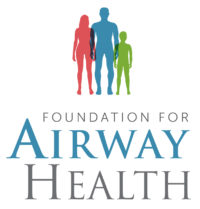Chewing For Digestion
Yes, it might sound surprising, but the way you chew your food is a remarkably influential factor in the intricate process of digestion. It’s a step often taken for granted, but it plays a pivotal role in your overall well-being. When we don’t chew our food thoroughly, it sets off a chain reaction within our digestive system that can have profound consequences.
Digestion begins in your brain and then to your mouth. When you chew, you’re not just breaking down your food into smaller, more manageable pieces, but you’re also mixing it with essential enzymes from your saliva which starts the breakdown of carbohydrates. This process of mastication prepares the food for further digestion in the stomach and intestines. However, when you rush through your meals, taking only a few bites before swallowing, you’re essentially sending large, inadequately chewed food particles down into your digestive tract.
This hasty approach places undue stress on your stomach and intestines, making their job much more challenging. Your digestive system must work extra hard to break down these inadequately chewed particles, leading to discomfort, gas, bloating, and the potential for malabsorption of vital nutrients. Over time, this can contribute to chronic digestive issues, such as indigestion, irritable bowel syndrome (IBS), leaky gut and even nutrient deficiencies.
How Untreated Tongue Ties Affect Digestion
Poor oral function or a
condition known as tongue tie can have a significant impact on your ability to chew effectively and, subsequently, on the digestion process. The tongue plays a crucial role in the initial stages of digestion, from breaking down food into manageable pieces to helping mix it with digestive enzymes in saliva. When oral function is impaired, several issues can arise, hindering optimum chewing and digestion.
Improper Chewing
The tongue, along with the teeth, plays a vital role in chewing food into smaller, more digestible particles. If someone has a restricted tongue movement due to a tongue tie or other oral function issues, it can make it challenging to manipulate and grind food effectively. This results in inadequately chewed pieces, which can be more challenging for the stomach and intestines to process.
Reduced Saliva Production
Inadequate oral function and tongue restriction can also lead to decreased saliva production during the chewing process. Saliva contains enzymes (salivary amylase) that begin the digestion of carbohydrates. When there’s less saliva available due to poor oral function, the initial breakdown of food is compromised, making it harder for the stomach and intestines to digest the nutrients effectively.
Digestive Discomfort
When food isn’t chewed properly, it can cause
digestive discomfort such as bloating, gas, and indigestion. The larger food particles can also take longer to pass through the digestive tract, potentially leading to constipation or other gastrointestinal issues.
Nutrient Absorption
Inadequate chewing can affect nutrient absorption. Nutrients are absorbed in the small intestine, and when food isn’t properly broken down in the mouth and stomach, the surface area available for absorption is reduced. This can lead to nutrient deficiencies over time.
Potential for Overeating
Poor oral function can also lead to quicker eating, as individuals may be subconsciously trying to compensate for the difficulty they experience while chewing. Eating too quickly can lead to overconsumption, which has its own set of digestive and health consequences.
Addressing issues related to poor oral function or tongue tie can significantly improve chewing and, subsequently, digestion.
How Oral Rest Posture Affects Digestion
Oral rest posture, the position of the tongue within the mouth, and the vagus nerve are interconnected factors that play a pivotal role in the complex process of digestion. Understanding how they influence each other can shed light on their collective impact on the efficiency and well-being of our digestive system.
Oral Rest Posture and Tongue Position
Oral rest posture refers to the natural position of the tongue when it’s not actively engaged in speaking or swallowing. An optimal oral rest posture typically involves the tongue gently resting against the roof of the mouth, with the tip of the tongue lightly touching the area behind the upper front teeth. When the tongue maintains this posture, it supports proper alignment of the teeth and jaw. This alignment, in turn, aids in the effective breakdown of food during the chewing process. When the tongue doesn’t rest in this manner, it can contribute to dental and orthodontic issues, such as misalignment, that can affect chewing and digestion.
Vagus Nerve and Digestion
The vagus nerve is a key player in the parasympathetic nervous system, often referred to as the “rest and digest” system. This nerve regulates various bodily functions, including digestion. When activated, the vagus nerve prompts the release of digestive enzymes, enhances peristalsis (the muscular contractions that propel food through the digestive tract), and stimulates the production of stomach acid. It also promotes the relaxation of the lower esophageal sphincter, allowing food to pass into the stomach. Furthermore, the vagus nerve plays a vital role in gut-brain communication, influencing feelings of fullness and satisfaction after a meal.
The interplay between oral rest posture and the vagus nerve is significant. An optimal tongue posture supports the airway and facial development, promoting clear and unobstructed pathways for the vagus nerve to function effectively. When the tongue doesn’t rest correctly, it can contribute to issues such as mouth breathing, snoring, or sleep apnea, which can hinder the vagus nerve’s function and disrupt the “rest and digest” mode, potentially leading to digestive problems.
Understanding the synergy between these elements is key to comprehending how small changes in oral posture can have a profound impact on our vagus nerve function, and subsequently, our digestive health. By promoting proper tongue posture, we can create a favorable environment for the vagus nerve to optimize digestion and enhance overall well-being.
How Mouth Breathing Affects Digestion
Mouth breathing can have several adverse effects on digestion due to the way it disrupts the normal functioning of the respiratory and digestive systems. Here are some ways in which mouth breathing can affect digestion:
Reduced Saliva Production
When you breathe through your mouth, the natural humidification and filtration processes that occur when you breathe through your nose are bypassed. This can lead to a dry mouth, which inhibits the production of saliva. Saliva contains enzymes that initiate the digestion of carbohydrates in the mouth. Reduced saliva production means that the initial digestion of starches is compromised, potentially leading to less effective digestion.
Swallowing Air
Mouth breathing often leads to swallowing more air, especially during eating and speaking. This can result in an increased presence of air in the digestive tract, leading to bloating, gas, and discomfort.
Reduced Nitric Oxide Levels
Nitric oxide, produced in the nasal passages, is vital for various physiological functions, including digestion. It helps relax the muscles of the gastrointestinal tract, allowing for proper peristalsis and digestion. Mouth breathing can reduce the levels of nitric oxide, potentially leading to digestive issues.
Impact on Stomach Acid Production
Proper breathing through the nose facilitates a relaxed state that encourages the production of stomach acid when needed for digestion. Mouth breathing may disrupt this balance, potentially leading to insufficient stomach acid production, which can result in poor digestion of proteins and increased susceptibility to foodborne pathogens.
Stress Response
Chronic mouth breathing is often associated with a “fight or flight” sympathetic nervous system response, which can divert blood flow away from the digestive organs. In this state, the digestive process is deprioritized, which may lead to slower digestion and potential discomfort.
The Magic of Myofunctional Therapy
Ever heard of myofunctional therapy helping digestion? If not, you’re in for an exciting revelation. This revolutionary approach to health and wellness is indeed a game-changer, not only for your digestion but for your overall well-being. Myofunctional therapy focuses on the intricate relationship between the muscles of the face, mouth, and throat, which play a crucial role in various bodily functions, including eating and digestion.
So, how do you know if myofunctional therapy is right for you? If you’ve been dealing with chronic digestive issues or orofacial myofunctional concerns, it’s time to take the first step toward a comprehensive wellness plan.
Book a myofunctional exam and discover how your habits may be influencing your digestion and well-being. In this journey, we embrace life’s vibrant colors and strive to thrive, not just survive.






